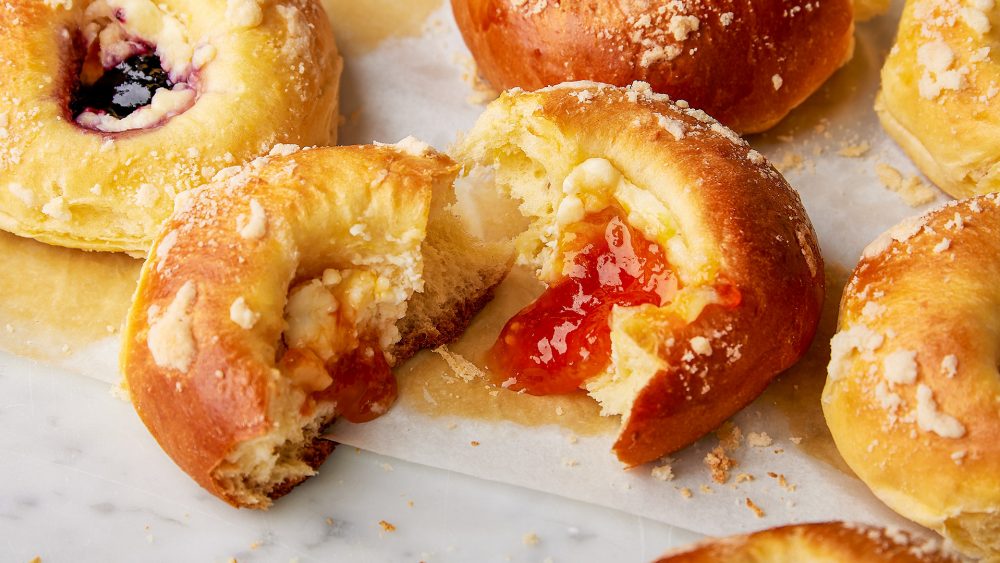Revelations can strike anywhere—even at an unassuming bakery tucked away in a Texas gas station, where we got our first taste of a kolache, a Czech pastry consisting of soft, sweet dough topped with fruit or cream cheese. Turns out, this iconic treat has a devoted local following, and one taste made it clear why. Kolaches combine the satisfying pillowy softness of a yeasted doughnut with the gooey-sweet fillings of a Danish.
It might surprise some to learn that Texas is a hot spot for Czech pastry. But the Lone Star State happens to boast one of the largest Czech populations in the country, which started with waves of immigration back in the 1800s. A European influence can be seen in everything from the distinctly polka-esque sounds of Tejano music to the lavishly decorated churches dotting the landscape of Texas Hill Country. And, of course, in the state’s seemingly bottomless appetite for kolaches, sending Texans flocking to off-the-beaten-path bakeries for their fix.
Despite its proud heritage, the kolache is not merely a product of the Old World kitchen, but also of the American melting pot, evolving over time to cater to Texan tastes. Taking their name from koláče (which translates as “cakes”), kolaches served as a hearty, portable snack to fuel the immigrant Czech farmers who toiled in the fields of their new homeland. As their popularity grew, they would eventually spawn the klobasnek, a savory, sausage-stuffed riff that’s equally in demand.
The kolache’s signature fluffy texture instantly won over culinary road trippers Jane and Michael Stern, who once noted, “It looks vaguely like the Danish you get in any diner, but a really good kolache feels and tastes like a breakfast treat that has gone to charm school.”
And, it turns out, making a really good kolache is far simpler than making a really good Danish—the secret is all in that soft, pillowy dough.
When made in the traditional way, the Danish requires nearly the same laborious lamination methods as a croissant, relying on the careful folding of butter into the dough to achieve a flaky strata onto which sweet fillings are added.
The kolache, meanwhile, is decidedly less fussy. The dough is enriched by eggs and melted butter (which incorporates easily), so the recipe begins as more of a dump-and-stir affair than a Danish. But the kneading is where the magic happens.
The key is to develop just enough gluten strength for a smooth, elastic dough that holds its shape when baked, but not so much that it becomes tough. A crucial tell is to see how the dough behaves when removed from the stand mixer—a properly mixed dough will be sticky, but should be cohesive enough to form a thick rope that falls cleanly from the dough hook. We found that about 10 minutes of mixing does the trick. After a brief countertop rise, we refrigerate the dough for at least eight hours (or up to 24). This offers several benefits: The chill slows yeast activity, preventing overproofing, while the long fermentation period enhances the dough’s flavor; plus, cold dough is easier to shape into buns before baking.
As a bonus, this dough can be made well in advance. (And perhaps this is yet another reason that homemade kolaches are so popular during the holidays.)
Just as important to the kolache is its filling, and that took us a few tries to get right. Traditionally, kolaches tend to pick a lane—either fruit or cream cheese—but we decided to opt for both. Unfortunately, our fillings had a tendency to slide off. We tested several unorthodox approaches, including docking the dough (that is, pricking holes in it with a fork) and adding fillings before a second rise. The best solution turned out to be the simplest: chilling our fillings, which stayed in place during baking.
Store-bought jam—any variety you like—works beautifully here. We enhance that fruity brightness by adding lemon zest to both the dough and the cream cheese filling, for a hint of citrus. And we assemble an easy crumb topping (a mixture of flour, sugar and butter) to scatter over the kolaches, for a finishing touch that adds a soft, subtle crunch.
Kolaches
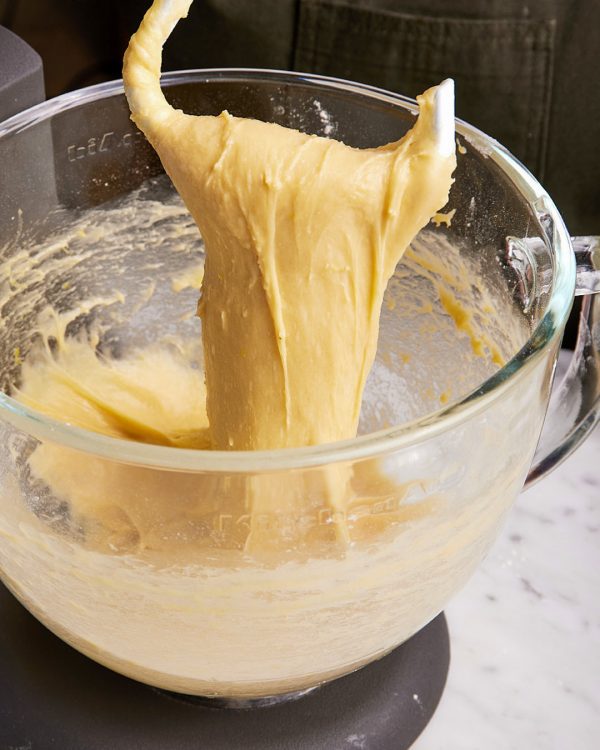
1. Mix the dough until elastic. Detach the bowl from the mixer and lift out the hook; the dough should fall from the hook in a thick rope into the bowl.
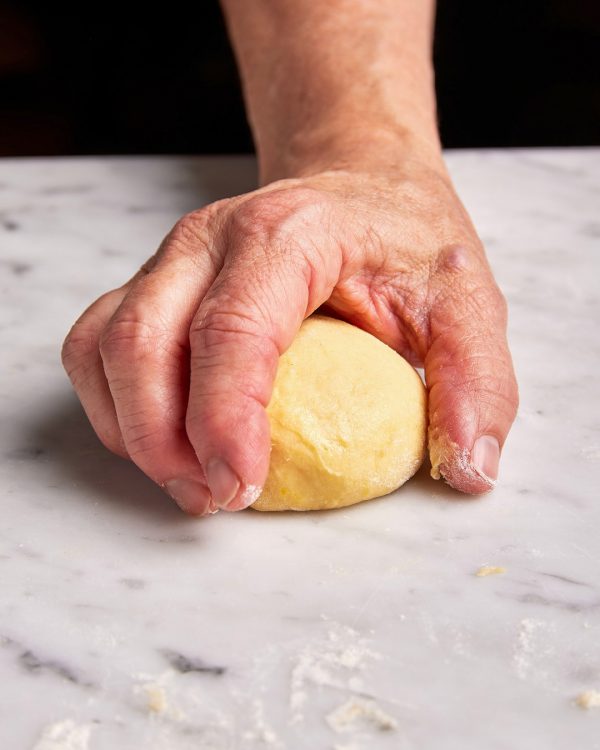
2. Let the dough rise, then chill for up to 24 hours. Divide the dough into 12 portions. Form each into a taut ball by rolling it under a cupped hand.
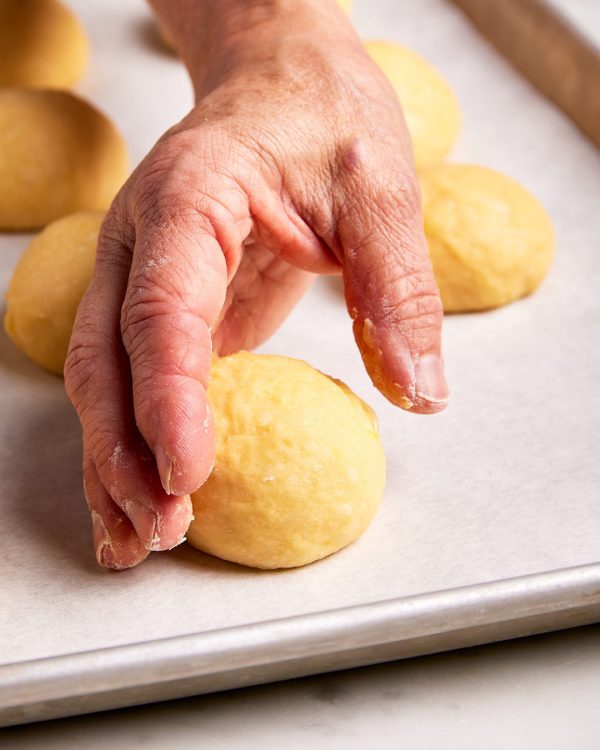
3. Once shaped into taut balls, place the dough portions seam down on a prepared baking sheet in 3 rows of 4, spaced 1½ to 2 inches apart.
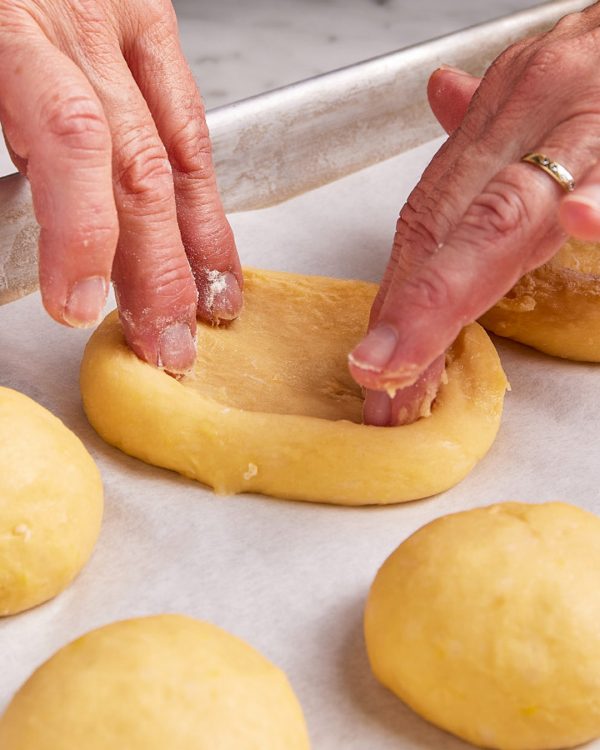
4. Leaving the dough balls in place on the baking sheet, use your fingers to create a 2-inch-wide hollow in each that is about as deep as the ball itself.
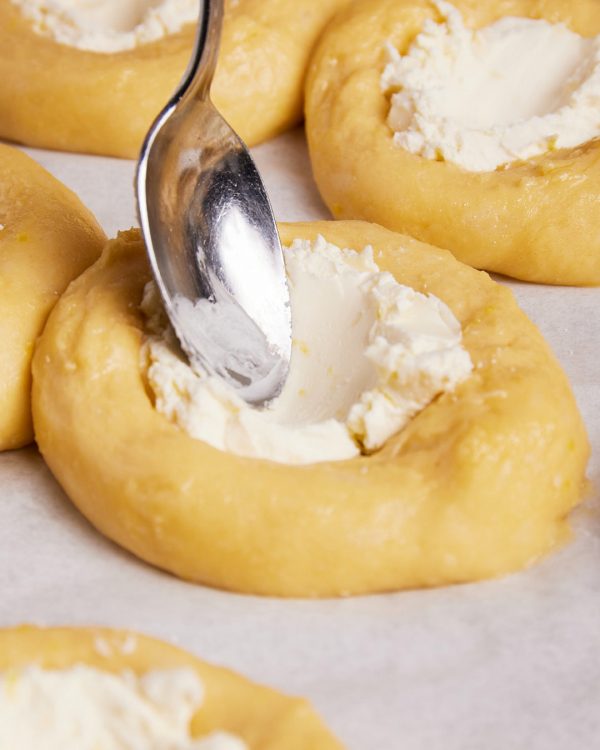
5. Fill each dough hollow with 1 slightly mounded tablespoon of cream cheese filling. Using the back of a spoon, create indentations in the filling.
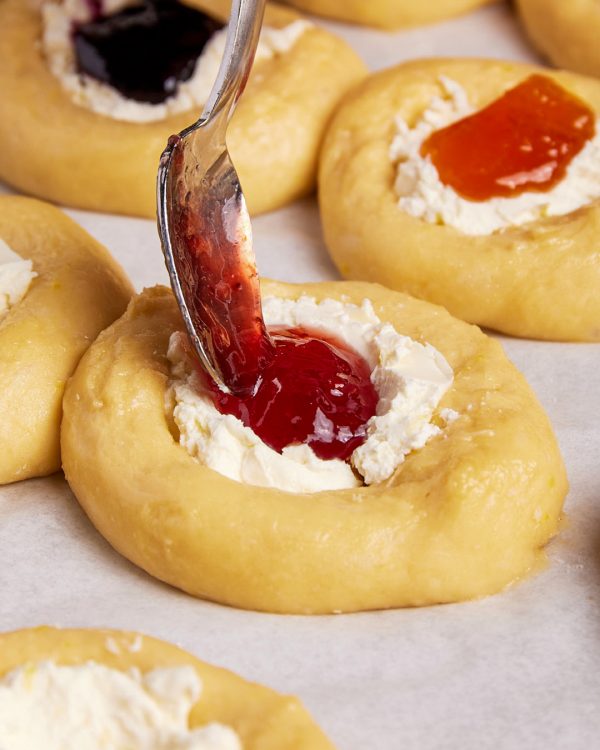
6. Into each indentation, spoon 2 teaspoons jam. If using crumb topping, sprinkle it onto the edges of the buns. Bake at 350°F until golden brown.

